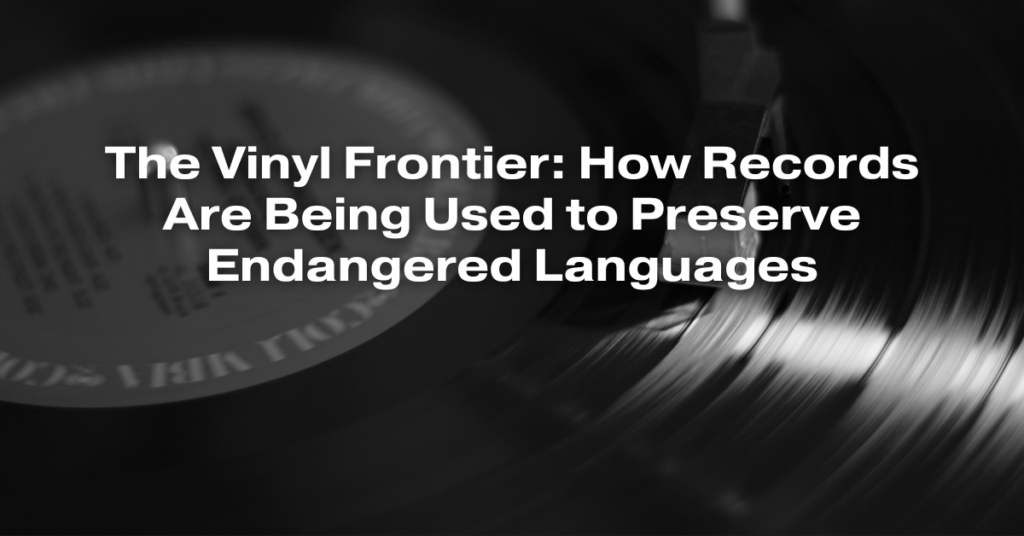In an era of digital communication and globalization, many indigenous and endangered languages face the risk of fading into obscurity. However, an innovative approach involving vinyl records is helping to preserve and revitalize these linguistic treasures. In this article, we explore the Vinyl Frontier, where records are being used as a powerful tool to safeguard endangered languages.
1. The Threat to Endangered Languages:
- Indigenous and endangered languages are at risk of extinction due to factors such as globalization, cultural assimilation, and a lack of documentation. These languages represent unique and invaluable cultural heritage.
2. Vinyl Records as Preservation Tools:
- Linguists and cultural preservationists have turned to vinyl records as a means of preserving endangered languages. The analog format offers a durable and high-quality medium for recording spoken word and oral traditions.
3. Linguistic Documentation:
- Vinyl records are used to capture the spoken word, songs, stories, and oral traditions of native speakers. These recordings provide a rich and authentic source for linguistic study and preservation.
4. Aural Tradition:
- Many indigenous cultures have strong oral traditions where knowledge and stories are passed down through spoken language. Vinyl records enable these traditions to be recorded and preserved for future generations.
5. Language Revitalization:
- Hearing their language on vinyl records can instill a sense of pride and identity among native speakers, fostering language revitalization efforts. It can also serve as a valuable educational resource for language learners.
6. Community Engagement:
- The process of creating vinyl records often involves collaboration between linguists, native speakers, and community members. This fosters community engagement and active participation in language preservation.
7. Preservation in Perpetuity:
- Vinyl records are known for their longevity. Properly stored records can last for decades or even centuries, ensuring that the recorded languages are preserved for future generations.
8. Global Awareness:
- The Vinyl Frontier initiative has gained attention worldwide, raising awareness about the importance of preserving endangered languages and cultural heritage. It highlights the global significance of linguistic diversity.
9. Collaborative Efforts:
- Organizations, universities, and cultural institutions collaborate with native communities to record and archive endangered languages on vinyl. These partnerships strengthen the preservation efforts.
10. Success Stories: – Several projects around the world have successfully used vinyl records to document and revitalize endangered languages. These success stories serve as inspiration for other preservation initiatives.
In conclusion, the Vinyl Frontier represents a creative and effective approach to preserving endangered languages. By harnessing the enduring qualities of vinyl records, linguistic experts, cultural preservationists, and native communities are working together to safeguard linguistic diversity and protect the cultural heritage embedded in these endangered languages. These efforts serve as a powerful testament to the importance of preserving the world’s linguistic tapestry for generations to come.


